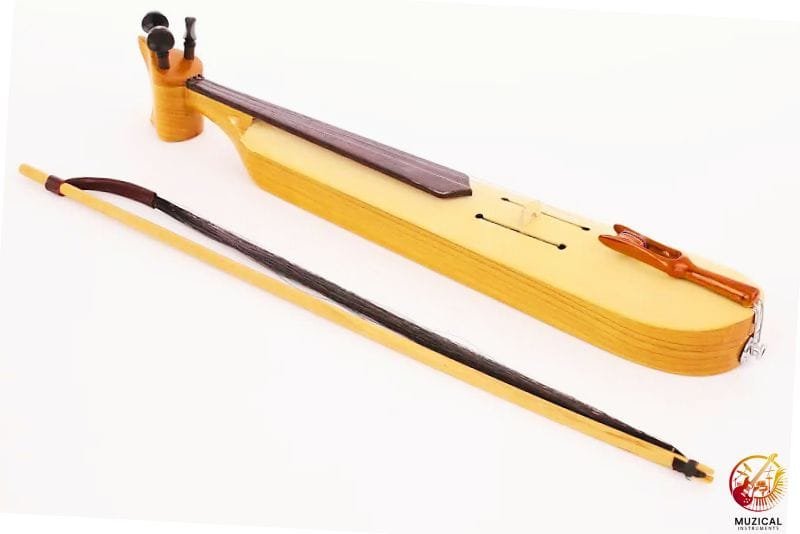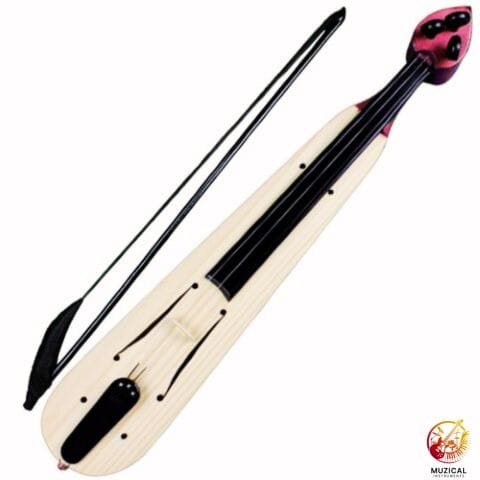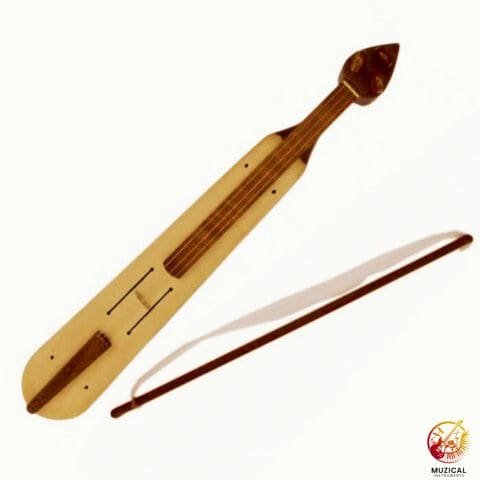What is the Kemence of the Black Sea?
The kemençe of the Black Sea is one of Turkey’s most iconic traditional instruments, yet many outside the region have never heard its sharp, haunting voice.
Found mainly in the country’s northeastern coast, this ancient Turkish bowed instrument plays a vital role in the region’s culture, identity, and sound. If you’re curious about how this simple, three–stringed instrument carved out such a big space in Turkish music, you’re in the right place.
In this article, we will answer the fundamental question: What is the Kemence of the Black Sea? We’ll explore where it comes from, how it’s built, and how it differs from more familiar instruments like the violin. We’ll also explore how it sounds, how it’s used in Turkish folk traditions, and why it’s still popular today. Along the way, you’ll find expert insights, useful comparisons, and tips for learning to play it yourself.
Whether you’re a music lover, an instrument collector, or just fascinated by different cultures, this guide will give you a deep look at the kemençe’s role in traditional Black Sea music and Turkish culture.
What Is the Kemence of the Black Sea?
So, what is the Kemence of the Black Sea?

In simple terms, it’s a small, upright, bowed string instrument played mainly in Turkey’s Black Sea region, also called “Karadeniz” in Turkish. It’s part of the broader family of regional instruments of Turkey and is distinct from other types of kemenche found in Istanbul or the Middle East.
The body of the kemençe is carved from a single piece of wood, often mulberry or juniper. It has three strings and no fingerboard. You hold it upright on your knee and play it with a short bow. There are no frets or markers. Instead, you press the strings lightly with the nails of your left hand. This gives the instrument its signature, expressive slides and ornaments.
Key Features:
| Feature | Description |
|---|---|
| Strings | 3 (usually tuned A – D – G) |
| Body Material | Mulberry, juniper, or similar wood |
| Played With | Bow (short, horsehair) |
| Held | Vertically, against the chest or knee |
| Playing Style | Nail-pressing for sliding notes |
Pro Tip: Unlike a violin, you don’t press the strings with your fingertips. You use your nails to gently touch the side of the strings. This unique style is part of what gives the kemençe its soulful sound.
What Is the History Behind the Black Sea Kemence?
Understanding the instrument’s physical form is just the beginning. To truly grasp what is the Kemence of the Black Sea, we need to journey into its rich history.
The Black Sea kemençe dates back over a thousand years. Historians believe it evolved from ancient string instruments brought through trade routes linking Central Asia, the Caucasus, and Anatolia. Its close relatives include the Persian kamancheh and the Byzantine lyra.
The Pontic Greeks, one of the oldest communities in the region also played a similar version, called the “Pontic kemenche.” This version shares construction and playing techniques with the Turkish kemenche. In fact, the Pontic kemenche meaning points to “small violin” or “little bow” in Greek.
By the Ottoman period, the instrument became a fixture in folk celebrations, village weddings, and seasonal festivals. Its sharp tone made it perfect for dancing outdoors. As Turkish kemenche instrument makers began refining the design, it gained more structure and a brighter voice.
Expert Insight: Ethnomusicologists see the kemençe as one of the few instruments that held on to its regional identity despite centuries of cultural change. That makes it not just an instrument, but a living piece of heritage.
How Does the Kemence Sound?
The Karadeniz kemençe sound is sharp, nasal, and deeply emotional. It’s a voice that cuts through the noise and fills the air with energy and feeling. Many describe it as crying or wailing, especially in slower songs. In dance music, it’s wild and rhythmic.


Its narrow range and limited number of strings give it a raw character. But skilled players can add great depth through microtones, vibrato, and bow control. These players can make the instrument sound playful, mournful, or downright hypnotic.
Sound Description Table:
| Emotion | Technique Used | Resulting Sound |
|---|---|---|
| Joyful | Fast bowing and rhythmic slides | Lively and dancing |
| Sad | Slow, vibrating bow strokes | Crying or wailing |
| Intense | Rapid ornamentation | Piercing, focused, trance-like |
Analogies: Think of it like a fiddle with fewer strings, more soul, and a bit of edge. It’s closer to how the human voice cries and laughs than most Western string instruments.
How Is the Kemence Different from the Violin?
You might think the kemençe is a cousin of the violin, and you’re not wrong. But they’re very different in construction, tone, and cultural use. The violin is tuned in fifths, has four strings, and is played across the chest. The kemençe has three strings and is played vertically.
Also, violins use the fingerpad method on a fingerboard. The kemençe skips the fingerboard altogether, you lightly press your nail against the string’s side. This gives the sound more flexibility and lets you create fast melodic slides.
Comparison Table:
| Feature | Kemence | Violin |
|---|---|---|
| Strings | 3 | 4 |
| Tuning | A – D – G | G – D – A – E |
| Position | Vertical (on lap) | Horizontal (under chin) |
| Finger Use | Nails on side of strings | Finger pads on fingerboard |
| Music Tradition | Black Sea folk music | Classical, jazz, pop |
Pro Tip: If you’re switching from violin, expect to unlearn some habits. The bowing is more percussive, and the scales may use Turkish makam modes instead of Western scales.
How Do You Learn to Play the Kemence?
Learning how to play the kemenche takes patience and a good ear. Because it has no frets or fingerboard, you rely heavily on listening and mimicking. Traditional players often learn by ear from elders or community musicians.
Modern learners can find online tutorials, instructional DVDs, and even dedicated music schools in Turkey. The first thing you’ll need is the instrument itself and a proper bow. Then comes posture: sit down, rest the kemençe on your left knee, and start practicing bow strokes.
Most beginners start with simple folk melodies. These help train your ear to the unique tones of the instrument and give you a feel for rhythm and ornamentation.
Common Beginner Mistakes:
- Pressing too hard with the nail
- Using too much bow pressure
- Not listening carefully to pitch
Expert Insight: Don’t rush to play fast songs. Slow practice builds muscle memory and refines your ear. Traditional players often spend years perfecting a handful of songs.
Why Is the Kemence So Important in Turkish Culture?
The kemençe isn’t just a musical tool. It’s a voice of identity for Turkey’s northeastern Black Sea communities. You’ll hear it at weddings, national holidays, local dances (called horon), and during moments of joy or mourning.
Each village has its own playing style. Some emphasize fast dances, others focus on lyrical solos. But the purpose is the same: to connect people. The sound invites listeners to feel, remember, and move.
Cultural Roles:
- Used in horon dance music
- Played during celebrations and festivals
- A symbol of regional pride
Contrarian Viewpoint: Some in urban areas once dismissed the kemençe as too “rural” or “old-fashioned.” But in recent years, younger generations are reviving it, mixing it with jazz, electronic, and even hip–hop.
Final Thoughts
The kemençe of the Black Sea may look simple, but its sound and spirit are anything but. It’s more than a bowed string instrument; it’s a living link to Turkey’s past and a bold voice in its present.
Now that you’ve explored its history, unique playing style, and cultural importance, you have a complete answer to the question, “What is the Kemence of the Black Sea?” You’ve learned what makes this traditional instrument special, how it compares to a violin, and how you can begin your own journey with it.
If you’re ready to go deeper, find a local kemençe player, watch their hands, and feel the music. Or better yet, pick one up and try it yourself. You might just find a new way to speak without words.
Just like regional styles shape the Kemence, the difference between Turkish and Arabic oud styles also tells a story of rich musical traditions.
FAQ: What is the Kemence of the Black Sea?
Q: Is the Black Sea kemençe the same as the classical (Istanbul) kemençe?
Not quite! The Black Sea kemençe also known as Karadeniz kemençe is a small, box-shaped fiddle with three strings and a thin, domed body carved from a single piece of wood. The classical (pear‑shaped) kemençe, used in Istanbul’s Ottoman and Greek music, has a different body, playing posture, and sound
Q: What wood is it made from, and how is it built?
Your kemençe is likely carved from juniper, plum, mulberry, walnut, or cedar, with spruce or fir for the thin soundboard . It has three main parts, neck, body, stem and sports a raised dome to resist bow pressure .
Q: How are the strings tuned, and how does one play it?
Traditional tuning follows perfect fourths (B-E-A) . You can play either the melody on the top string with the others as drone, or double-stop harmonies on two strings . You use your fingernail to press the string sides no fingerboard involved while bowing crisply to produce that vivid Karadeniz sound
Q: How did it end up in the Greek islands?
After the population exchange of 1922, Pontic Greek musicians brought their Karadeniz kemençe to Aegean coastal communities . As a result, you’ll still hear similar styles in some Greek islands today testament to how music travels with people.
Q: What’s unique about its sound and musical role?
The instrument’s three-string design and thin soundboard produce a gritty, nasal tone full of emotion, sorrowful or danceable depending on tempo . Its raised dome helps the thin chest survive aggressive bowing even during fast horon dances. And its signature fourth‑based harmonies add regional color
Q: Can I buy one online, and what should I look for?
Absolutely. Turkish shops offer handmade, professional-grade kemençes made from spruce and mulberry, often with a bow, soft case, extra strings, and rosin included . Prices range from ~US $99 for beginner models to ~$400–$1,000+ for pro and electric versions.
